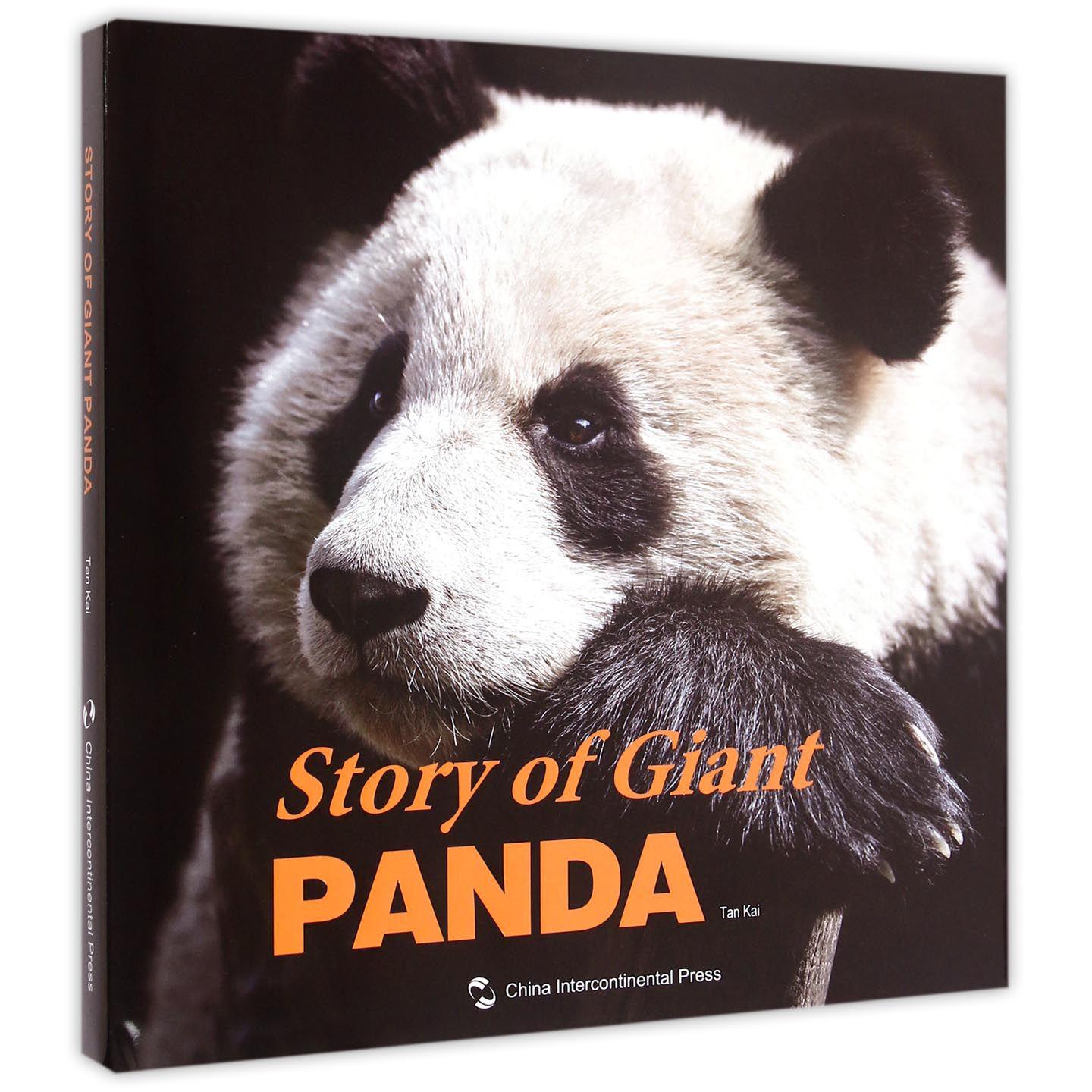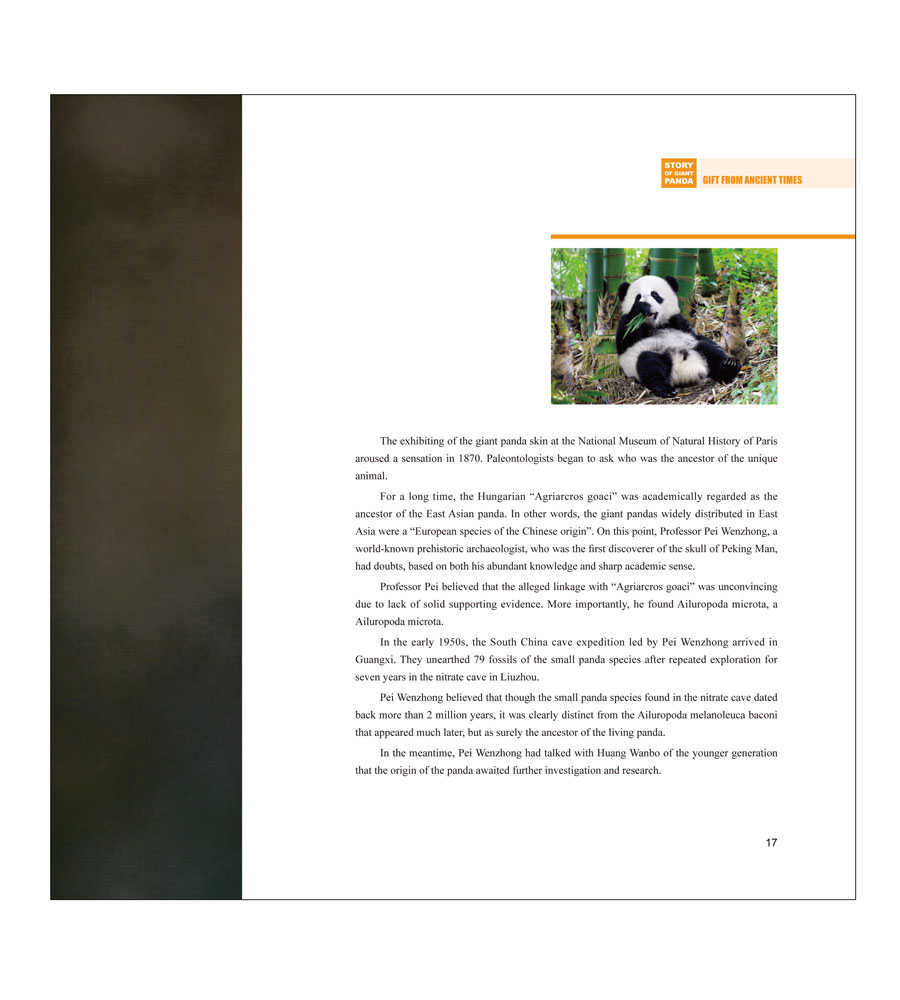
出版社: 五洲传播
原售价: 358.00
折扣价: 193.40
折扣购买: 熊猫的故事(画册英文版)(精)
ISBN: 9787508530079

谭楷,作家,编审,现居四川成都。曾任《科幻世界》杂志社编辑、副主编、总编;四川省野生动物保护协会历届理事,四川省动物学会历届理事。1963年开始发表作品,1986年加入中国作家协会。著有报告文学集《孤独的跟踪人》《大震在熊猫之乡》等五部,多篇(部)大熊猫题材的科普作品、科学诗、儿童文学作品,被誉为“熊猫作家”“大熊猫文化专家”。他担任执行主编的中英双语版《大熊猫》杂志,已创办10年,深受中外读者欢迎。2013年8月,中国网络电视台熊猫频道开播,谭楷担任顾问和主要撰稿人。
"Panda Mothers with Different Personalities Experts started to gain a preliminary understanding of panda motherhood after Lili gave birth in the Beijing Zoo in 1963. Unlike black bears, panda mothers don’t react violently towards strangers. Later, more and more captive-bred pandas give birth and some of the young mothers got panicked by the cries of their babies and even tried to flee. Some weren’t able to hold their babies and couldn’t act like competent mothers in terms of nursing. There was wide divergence in such behavior. However, what about panda mothers living in the wild? In March 1981, a female panda named Zhenzhen was caught near the field observation station in Wolong Town, Wenchuan County of Ya’an City in Sichuan Province. The staff put a wireless neck strap around the panda’s neck while it was sedated and then released its back into the wild. Afterwards, a study of the signals emitted by the device helped domestic and foreign experts to understand the panda daily routine amid the bamboo groves. They deliberately sought to avoid meeting Zhenzhen directly, although they did once cross its path. Judging from changes of Zhenzhen’s feeding habits, the experts concluded it must be pregnant and later had given birth as the signal indicated it stayed in the same location. Dr. George Beals Schaller, a world famous zoologist, together with Professor Hu Jinchu, a Chinese panda research expert, decided to visit Zhenzhen based on its radio location about a month after it was assumed to have given birth. The two experts sought to proceed carefully along the path covered by leaves in the shaded bamboo groves. 大山外,春节的鞭炮礼花早已放过了,而秦岭里的佛坪,大朵大朵的雪花,如白绒花漫天飞舞。一夜间,群山披上更厚实的银装。熊猫妈妈带着它一岁半的娃娃,在雪压得如同弯弓般的竹林中从容觅食。母子俩相距不远,娃娃完全学会了妈妈那一套本事,挑选好竹子,卷着吃竹叶,吃得很香。但娃娃想进一步与妈妈亲昵时,却被妈妈掴了一掌。是想吃妈妈的奶,还是想让妈妈抱一抱?这一掌,也许是妈妈将扔下娃娃的信号。按自然规律,一岁半的娃娃就快要完全自立了,还跟妈妈粘粘糊糊怎能行? 在这一片竹林吃了一餐,又要转转,到另一片竹林去就餐。熊猫妈妈在前,走了几步,回头没看见娃娃。它叫唤了几声,娃娃呼哧呼哧跟着妈妈的脚印,挺吃力地爬过来了。雪太深了,淹过了娃娃半个身子。从出生到不能走路的头几个月,妈妈总是用嘴叼着娃娃四处转移。那是当熊猫妈妈与生俱来的技巧——下口轻了,叼不起来;下口重了,会伤及娃娃的皮肉——咬住娃娃的力量要恰到好处。 娃娃已经长成30至40公斤的“肉墩“,叼不动了;即使叼得起来,雪地跋涉非常吃力,妈妈也不可能走远。 于是,娃娃心领神会,爬到了妈妈身上。妈妈喘着粗气,踩着深深的积雪,穿行在林海。 2011年2月,陕西佛坪自然保护区管理局西河保护站站长熊柏泉拍到了一张熊猫妈妈背着幼崽在雪地上行走的照片。 这张照片,见证了母爱。 …… 看画册,欣赏更多精彩内容!




